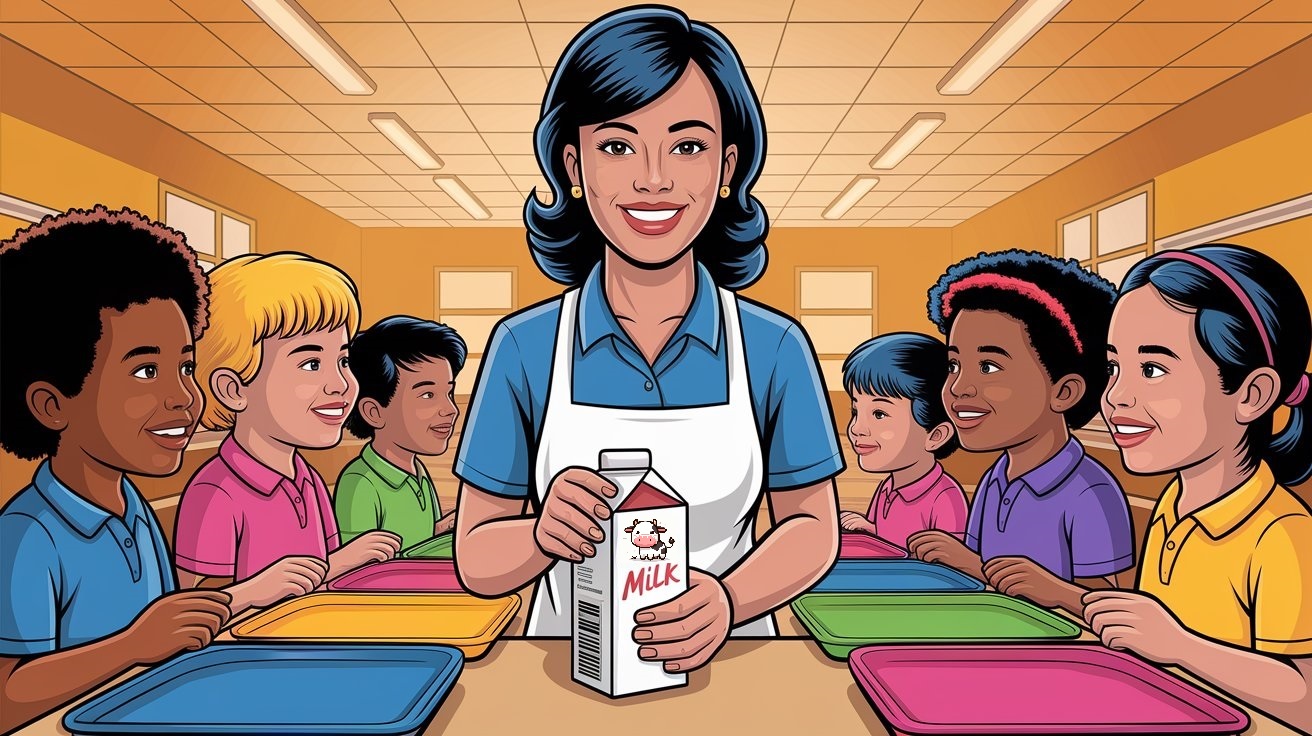
The recent buzz about the “Whole Milk for Healthy Kids Act” has us, and many of families in US paying close attention. This isn’t just a political debate; it’s a conversation about the fundamental building blocks we’re providing our kids in schools. And frankly, it’s about time.
The Skinny on Skim: Why the Old Rules Might Be Wrong
For years, we’ve been told that low-fat or skim milk is the gold standard, especially for growing children. The USDA’s guidelines, aimed at curbing saturated fat intake, pushed whole milk out of school cafeterias. But is this really the best approach?
- Nutrient Absorption: Fat isn’t the enemy. It’s essential for absorbing fat-soluble vitamins like A, D, E, and K – critical for bone health, immune function, and overall development. Skim milk, while lower in calories, can hinder this absorption.
- Satiety and Weight Management: Counterintuitively, some studies suggest that whole milk can actually help with weight management. The healthy fats in whole milk promote satiety, keeping kids fuller for longer and potentially reducing the urge for sugary snacks.
- The Sugar Paradox: Let’s be honest: many flavored low-fat milks are loaded with added sugars, which can contribute to childhood obesity and other health issues. As one of my RD colleagues rightly pointed out, it’s a bit hypocritical to ban whole milk while allowing sugary flavoured options.
The Whole Milk for Healthy Kids Act: A Step in the Right Direction?
This bipartisan bill, proposing to reintroduce whole and 2% milk into school lunch programs, is a breath of fresh air. It acknowledges the evolving science and the need for a more nuanced approach to childhood nutrition.
- Choice and Flexibility: Offering a variety of milk options empowers parents and children to make informed decisions based on individual needs.
- Nutrient Density: Whole milk provides a rich source of calcium, vitamin D, and protein, all vital for growing bodies.

Beyond the Bill
However, it’s not simply a case of “whole milk good, skim milk bad.” As a families advocate for a holistic approach.
- Individual Needs: Every child is different. Some may have lactose intolerance, while others may have specific dietary requirements.
- Balanced Diet: Milk, whether whole or skim, should be part of a balanced diet that includes fruits, vegetables, and whole grains.
- Further Research: We need more large-scale, long-term studies to fully understand the impact of different milk types on children’s health.
Conclusion: The “Whole Milk for Healthy Kids Act” is more than just a political move; it’s a chance to re-evaluate our approach to childhood nutrition. As a family doctor, I believe it’s a step in the right direction, offering more choices and acknowledging the evolving science. Let’s hope this legislation leads to healthier lunchrooms and healthier kids.
LATEST
-
The Ultimate Guide to Organizers Heaven Finds in Amazon
Designer Circa 09′ Dreaming of a kitchen that’s both functional and visually appealing? You’re…
-
More Than a Speeding Ticket, They Could Take Your Automobile
Picture this: You’re cruising down a Florida highway, the wind in your hair, and…
-
Buckle Up and Look Up: The EV That’s Driving Upside Down
The Incredible World of Formula One Downforce Hey there, car enthusiasts! Have you ever…
-
Unearthing Amazon’s Hidden Gems (Up to 80% Off!)
Hey Fellow deal hunters! Let’s be real, who doesn’t love the thrill of snagging…
-
The ‘Rich Mom’ Illusion: How to Turn $100 into a Million-Dollar Wardrobe
Hamptons You gaze upon images of celebrities, their effortless style radiating a quiet confidence.…










